The mercury was on 1 degree outside this morning as we woke up. Yesterdays low fog and misty rain had cleared overnight. This mornings clear skies meant the air had a real snap in it. As we looked from our window at Hotel Commerce down onto the intersection we were surprised to see people sitting outside the local cafes drinking coffee. They were rugged up as we discovered only the french can, with flair of course. We opted for the warmth indoors at a boulangerie which served the best croissants and coffee for only €1.80. A visit to the Tourist Information near the boulangerie gave us a few parts of the city to check out.
Millau
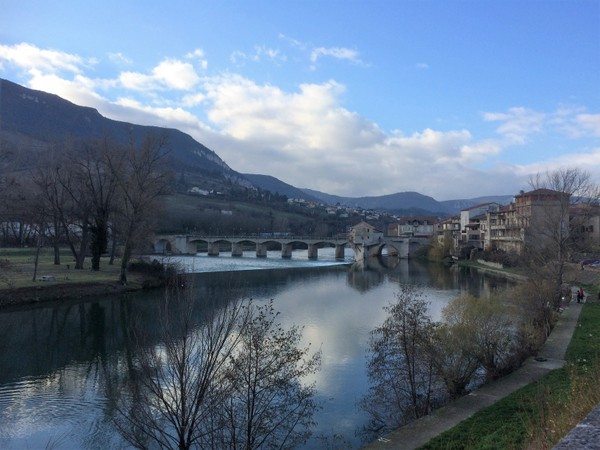
Millau dates back 3,000 years and was once the site of a Roman settlement manufacturing high quality earthenware. During the Middle Ages it became the centre of high quality glove production, a tradition which continues today. Walking through the streets of the old city there’s still a number of shops selling the famous lamb skin gloves. It’s an interesting area to wander through with narrow streets and alleys like a spiderweb spreading out in all directions. Along the streets are hairdressers, bakeries, a huge array of restaurants, and cafes. There’s also shops selling all sorts of fashion, jewellery, precious stones, leather bags and even car accessories. It’s a reminder of the way communities used to be with shops all close to housing, before big american style supermarkets came along.

Although most of the buildings have been plastered and renovated down through the years the age of the buildings can be seen in the way some of them bow out with a little middle age spread. One features which is more noticeable from a distance is the Beffroi. The tower known locally as Tour Des Rois d’Aragon (Beffroi De Millau) is all that remains of the old town hall building. At one stage the Beffroi was used as a prison.

Probably the most important buildings in the old city is “Les Halle’s” (the covered market). The French love their food and people still visit the markets to get fresh good quality food. The markets have an amazing array of foods many of which I’d never seen before. In the boucherie it was fascinating to see all the different types of meat for sale. With all different types of sausages, and organs on display it seems that no part of the animal goes to waste.
The fish monger had a wide range of fish, shellfish and crustaceans, some of which we’d never seen before. Everything looked and smelled really fresh and delicious.
The square nearby had been taken over by the dry market. All sorts of clothing, plus fresh fruit and vegetables were being sold amongst the trees surrounding the public fountain. Cafe’s fronted the square and apart from the big grocers vans it was like stepping back in time. Men chatting over a coffee or a pastis outside the cafe whilst the shopping for food took place in the square.
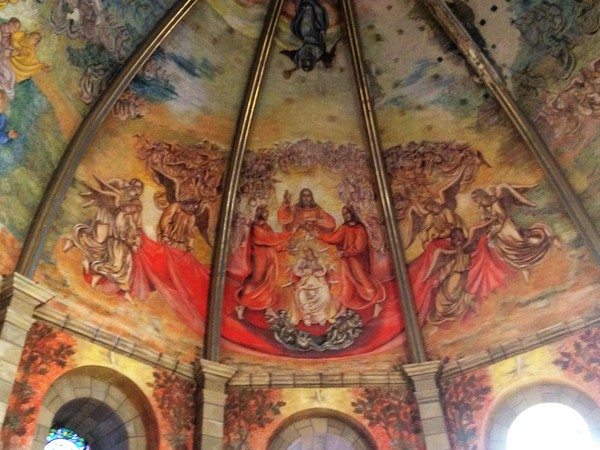
On the edge of the square we visited Eglise Notre Dame de l’Espinasse. The church was an important church of pilgrimage during the middle ages. It’s quite a simple church with a long nave with a few chapels attached to the side. Originally built in Romanesque design it was rebuilt during the 17th century.
The main feature of the church are the frescoes above the choir and altar. They were painted by Jean Bernard between 1939-40 and add a real sense of colour to the church.
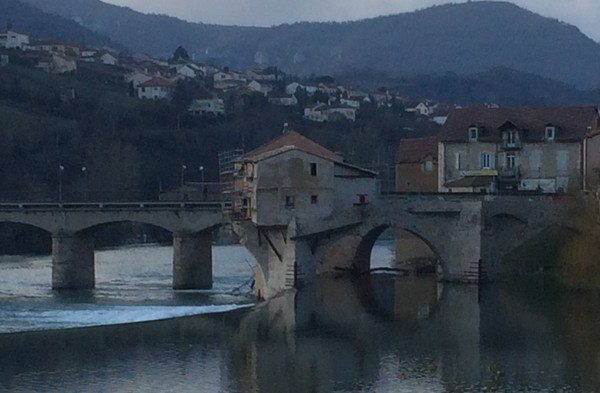
Wandering through the old city it was fascinating discovering old buildings, hidden squares and gates. Eventually we arrived at the river where renovations are underway on the old mill, which is now an art gallery. The mill sits on the remains of the old medieval bridge. Originally the bridge was the main link on the pilgrimage route and of course a toll was collected. However after one of the arches collapsed in the 18th century most of the bridge was demolished. Only the single arch which connects the old mill is still standing.
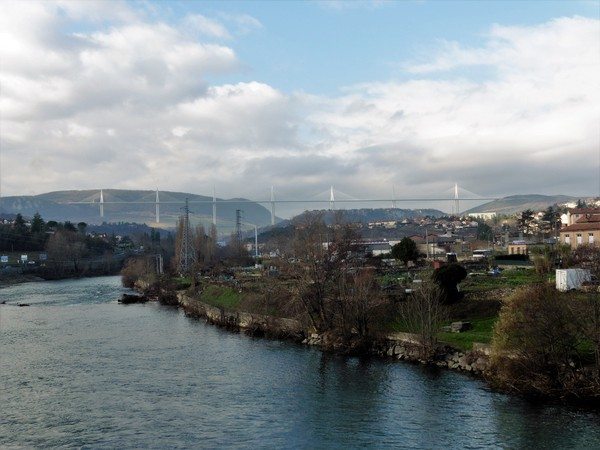
Nearby is a new bridge where we had a glimpse of the famous Millau Viaduct in the distance. It’s quite amazing to see how big it is from a distance.
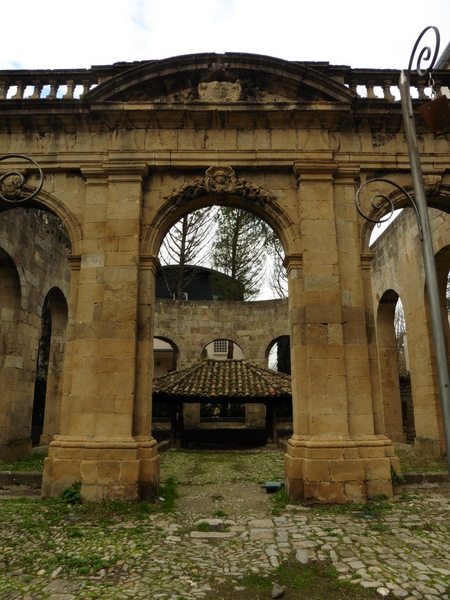
They even had a 17th century laundry which was opened to stop the local women polluting the river.
Millau Viaduct
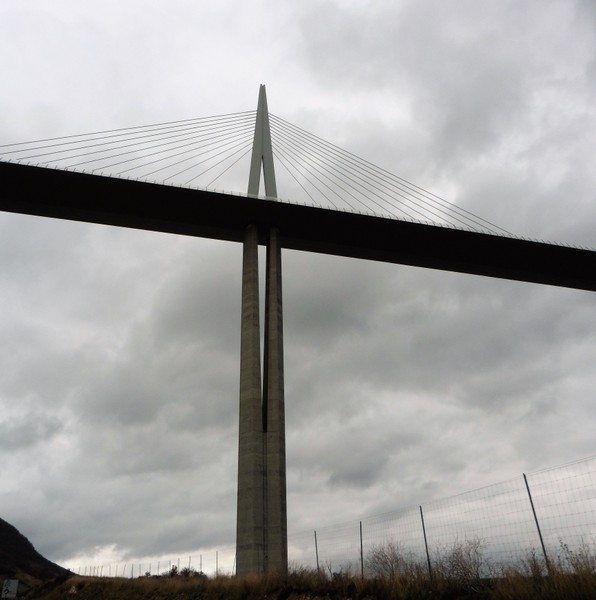
After checking out some more recent buildings we headed out towards Roquefort-Sur-Soulzon. It was a nice ride out along the River Tarn which took us under the worlds tallest bridge. The Millau Viaduct was designed by British architect Norman Foster and French structural engineer Michel Virlogeux. The cable stayed bridge was completed in 2001 to span the Tarn Gorge. Previously to the bridges construction, traffic between Paris and Spain had to travel down through Millau.
During the summer months traffic congestion caused by holiday makers would bring Millau to a standstill. Even today we witnessed traffic congestion in Millau as locals parked around the Boulangerie had traffic banked up for a block. We could only imagine what it would be like with slow moving caravans, and campers adding to the traffic.
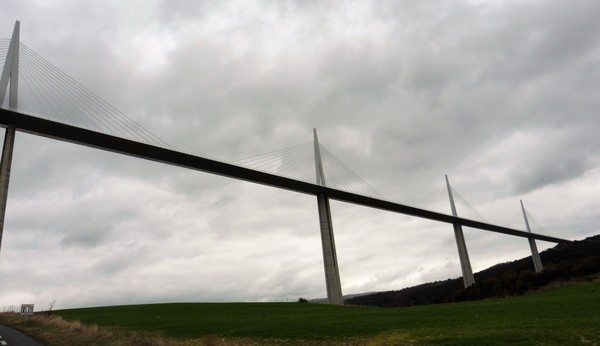
The Millau Viaduct wasn’t the cheapest option and had lots of opponents. The bridge cost €394 million plus an extra €20 million for the toll booths. It is quite incredible looking up from underneath. The bridge is the highest structure in France with one mast a whopping 343 metres above the base of the structure. It’s even taller than the Eiffel Tower, which is only 324 metres tall. The Eiffel company provided steel for construction of the bridge. During construction they used state of the art construction methods. A special concrete was used. Special sliding moulds were used whilst pouring concrete into the piers which increased in height by 4 metres every three days. The roadway was built at either end of the bridge and then rolled into position using a computerised system of lifters. It featured on one of the episodes of Megastructures. Construction on Millau Viaduct started in October 2001 and the bridge opened in December 2004 which is quite impressive. All up from the laying of the first stone until opening construction took 1097 days. I’ve seen local councils take longer to fix a pothole. Beneath the Viaduct there’s even a Visitor Centre which is free to visit. It has great views of the size of the bridge.
Roquefort-Sur-Soulzon
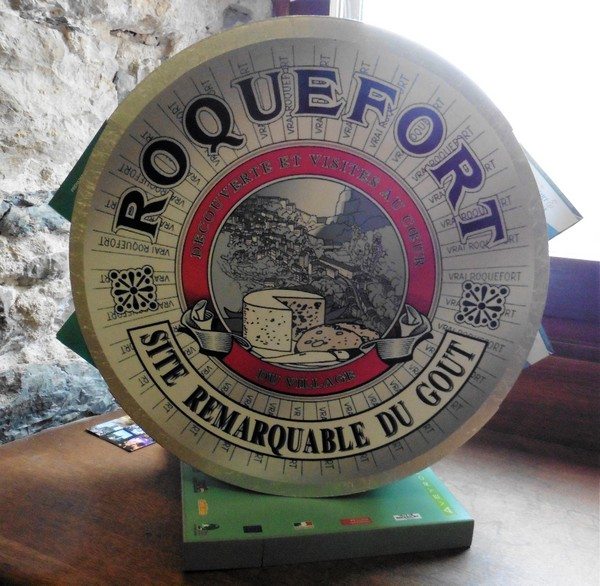
After a brief stop we headed on to Roquefort-Sur-Soulzon. A winding road took us up from the River Tarn through the hills to Roquefort-Sur-Soulzon. As you may guess it’s the home to a much loved or hated (depending on your taste) Rochefort cheese. Société has a guided tour through the cellars where their cheeses are stored. Unfortunately the tour is in French but there is a pamphlet in English which explains each part of the tour. The first part of the tour was the introduction which, with the aid of an animated model, explains the geological changes which took place. Shifts within the earth left the mountains exposed whilst forming the caves and faults which are used by the cheese makers. Strangely enough I could basically understand what the guide was saying in French.
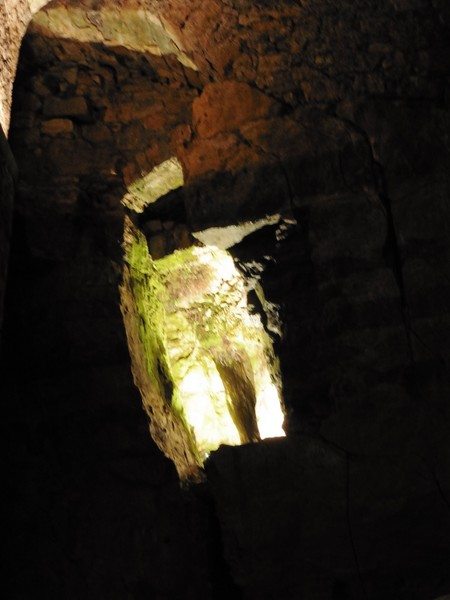
The cellars within the cave system are connected with natural tunnels known as fleurines. The fleurines allow air to circulate through the cellars and caves. Doors are fitted to the fleurines to allow the master ripeners to control the flow of air which affects the temperature and humidity levels. One of the cellars is a whopping 11 storeys high and can hold 300,000 loaves of cheese. In a season that computes to 1.4 million loaves.
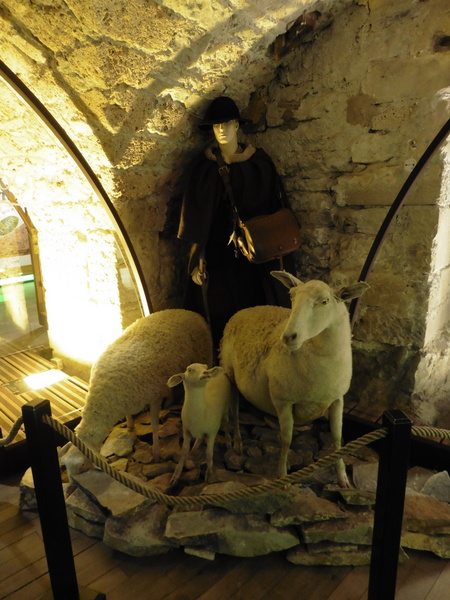
A film showed the processes involved from milking the goats to production. It was quite fascinating seeing how the penicillium roqueforti spores are added to the sheeps milk. Using long 3mm wide needles the cheese is aerated to allow for the fungus to grow within the cheese. Depending on the type of cheese ripening can last between 14 and 25 days. On display was a bottle which held a sourdough bun which was host for the fungus from which one of the three strands of fungus are collected. Once the bread has moulded away completely the fungus is collected. It looked pretty rank and furry. A small bottle held 4 grams of fungus (about the size of a bottle cap). It was enough for 5,000 litres of milk.
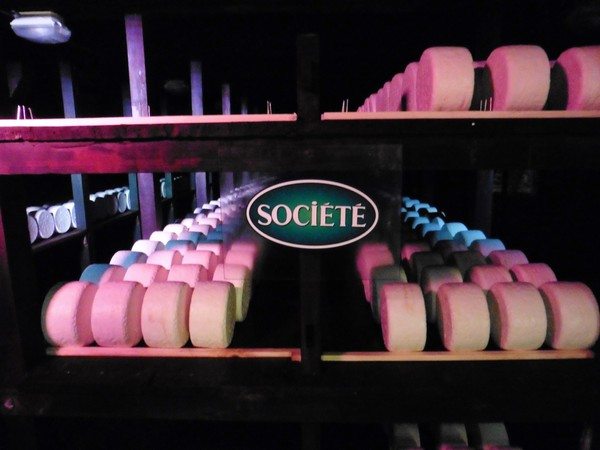
Travelling up through the cellars we saw the wooden racks where thousands of cheese loaves are laid out during the ripening and maturing stages. These days eighty percent of Sociétés cheeses are sliced and pre packaged for distribution. At the end of the tour we were given some samples of the three roquefort cheeses produced. There were small differences in texture, creaminess, and saltiness between the Sociétés 1863, Baragnaudes and Templiar. In between tasting each cheese we took a piece of gingerbread to cleanse the palate. It was a nice way to end the tour with some lovely tasting cheese. On the way out we visited the museum which traced the story of the Société company from the first factory in 1863. It was fascinating how they trained shepherds, implemented standards, provided support for the local community.
We had a great time visiting the cellars and learning about the production of Roquefort, one of Michele’s favourite cheeses.
Late in the day we headed back to Millau. Tomorrow we head to Avignon but first we’re sampling some local Chinese cooking.

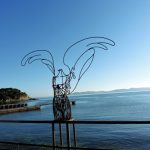
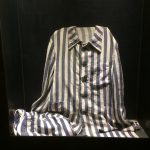
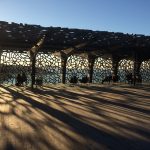
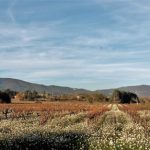
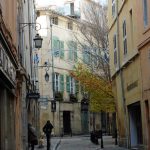
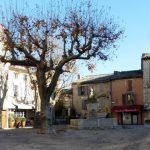
One thought on “Millau And Roquefort Cheese”